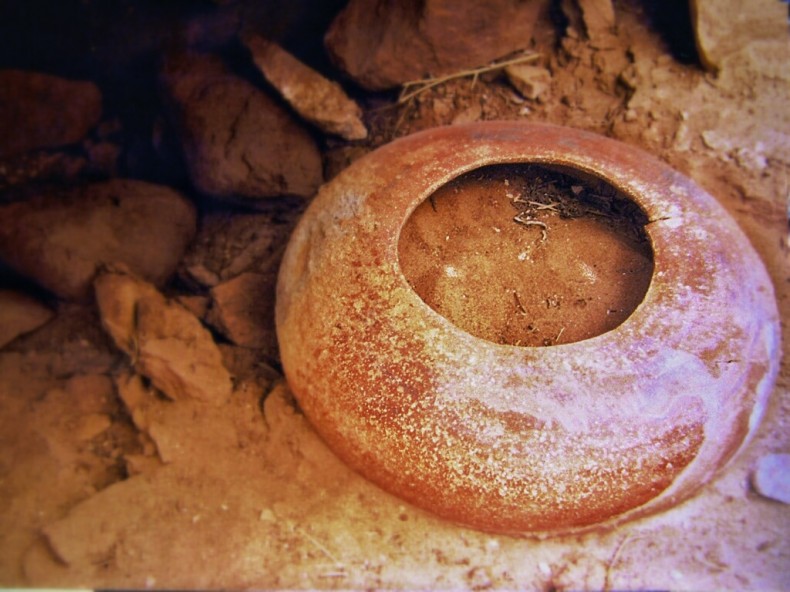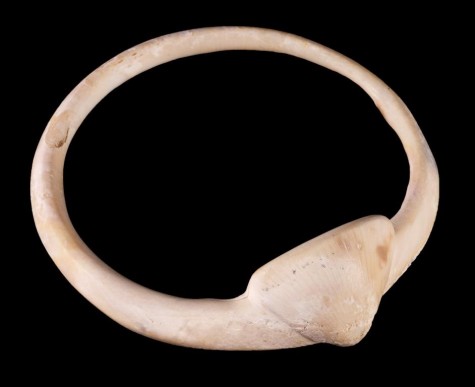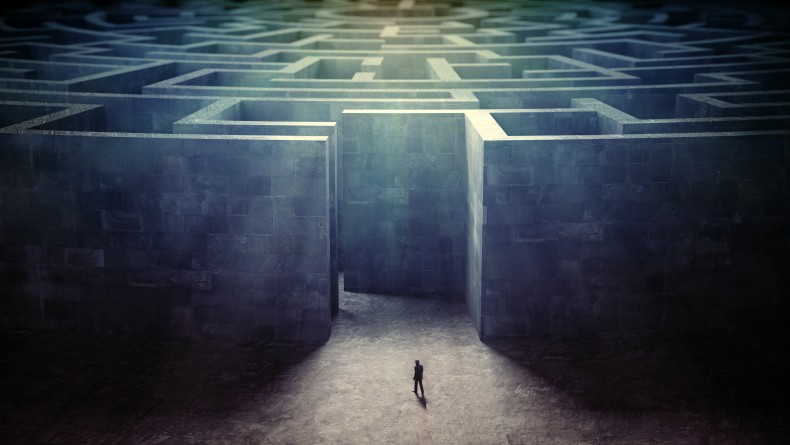I once found a beautiful pot, an ancient red seed jar tucked beneath a boulder in the desert. By ancient, I mean pre-Columbian, probably 800 years old. It was hidden along the rubble-choked slope of a canyon in Southeast Utah. The way it was placed, seated in shade and red blow-sand next to a once hand-polished metate, you could tell someone put it there to keep it safe, not to be seen or worn away by the weather, probably planning to return for it. The return never happened.
I used to walk for weeks at a time looking for things like this, diamonds in the deep country, what is left of archaeology after more than a century of the general pillaging of artifacts, culprits ranging from museum expeditions to black market pothunters. My solution is leaving objects where I find them. It’s certainly not everyone’s solution, but it is mine. I wrote a book on the dilemma, “Finders Keepers.”
Upon finding this seed jar, I spent hours peering into the shadowed underside of its tilted, protective boulder. I reached out from time to time to touch the slowly decaying ceramic finish, as did my friend who was with me for the discovery.
My friend wanted it moved, not to take it home, but to get it into an even more protected space. I said no, insisting it remain exactly where we found it. The debate continued intractably into the next day. We’ve got rules about this kind of thing.
I’m not talking about government rules, which protect objects like this, making it illegal to remove artifacts from any public lands. This was about our rules, where you just don’t take something like this. Ancient and enchanting, it is not something that belongs to us. It belongs, rather, to the land itself, its centuries of residence not something we should disturb. It belongs to memory, culture, and the bloodlines of people who have moved through here.
My friend and I had been backpacking off-trail in Utah for a decade together, and we’d been in each other’s company for finding a coil-weave basket, probably 1,500 years old, a painted clay canteen with ceramic loops for carrying guessed around 900 years old, and this red seed jar, a style you would have seen around the Four Corners 800 years ago. We left each where we found it. No digging was ever involved. That was another rule, not even a hand-swipe through the soil. You could find only what had been intentionally hidden, artifacts deposited into some protected space, but not those buried with the dead, which accounts for most whole ceramic vessels found in any collection you’ll see, private or public.
My friend wanted to move the seed jar farther out of sight so no one would spot it like we had, and take off with it. But I held my ground. This was where the original hands had placed it, and where it should stay. The route getting here was not easy, a litany of cliffs and canyons, so I wasn’t envisioning someone making a causal find. The jar itself was among countless toppled boulders, easy to get back to if you knew where it was, but nearly impossible to find if you were just out poking around. I thought it was at least marginally safe, and insisted that we not even lift it from its spot for examination. It was to stay exactly as we found it.

I’ve had an archaeologist call me a vandal for leaving artifacts like these and not telling authorities, which was, I suppose, another of our rules: tell no one. He said that I was just as bad as the thief who would inevitably come along behind me and take the very thing I wanted preserved. After that, who knows where it could end up, traded on the illicit American artifact market, propped up in a display case behind someone’s couch, or pitched into the trash when people come to clean out after the owner of the object dies.
I’ve witnessed the latter, so I know it’s true. A friend and carpenter once took me to a house in Colorado to show me artifacts being thrown away. He was hired to refinish the place for resale, and he took me to the back yard where the surviving generation had been pitching carelessly broken pre-Columbian jars and bunches of bone and shell beads into the dirt. I took one thing from that mess, an intact Hohokam bracelet carved from a white Glycymeris shell, a product of ancient southern Arizona.
Museums don’t really want this stuff. If I’d walked in with this slender, O-shaped bracelet, and asked them to curate the thing, they would have told me to keep it. No provenience, no data, it was more or less worthless to science, better off in my pocket. I could have taken it to the Tohono O’Odham who live in southern Arizona and northern Mexico, direct blood relations to the Hohokam, but with that I saw the web growing only more tangled. Who would I give it to? Who would want it?
Instead, I drove to a nearly-forgotten Hohokam site southeast of Phoenix, walked up one of the nearby desert washes where years earlier I had found part of a similar bracelet eroding in the dry, water-driven gravel. I dropped the bracelet into the wash-bottom and left it there.
I didn’t mention this to the archaeologist who called me a vandal.

I do wonder about the larger things I’ve left behind. I remember a pair of Apache water baskets in an eastern Arizona cave about 20 years ago, and I don’t dare go back, all but certain they are now gone. Just about anyone who finds them, I assume will haul them home. I still wouldn’t have taken them, even knowing they’d be gone by someone else’s hand. The argument doesn’t hold for me where one should steal an artifact to prevent another from doing the same. Not telling authorities such as archaeologists or land managers is another story. I knew they’d take the baskets, too, gathering what data they could, but leaving the cave ultimately empty to prevent an eventual theft and the removal of an object from the hands of science.
It’s been 11 years since we found the seed jar in Utah. Normally, I wouldn’t go back to see if something was still there, but the superb science show Radiolab asked if the original crew, including my wife who was camped in the next canyon over at the time, would return to the site along with a radio producer. We agreed and last March backpacked to the edge of a canyon where we set camp, and the next day headed off for the location of the seed jar.
On a warm, sun-pierced day, we descended one canyon over steep boulder fields, and rose into a crack-climbing, shade-seeking ascent of another canyon. All along the way, we pondered whether the seed jar would be there or not. If it was not, what might that say about humanity and our beliefs? We had many questions.
In lieu of the actual segment, when we got there, we found the seed jar gone. But it was not how we expected. A big shield of caprock had come off and obliterated a couple hundred square feet of earth. It must have happened not long after we’d been there, more than 11 years earlier. The finer dust that shrouds slides like this had all but washed and blown away. Plants such as blackbrush and Mormon tea had begun growing back.
The jar is now buried and most likely destroyed beneath tons of rubble.
Photo credits: Shutterstock; Regan Choi; Arizona State Museum.

Craig,
Good for you! Unfortunately our past is vanishing too quickly and your philosophy is a breath of fresh air. Thanks for sharing!
Frank
I agree with this to some extent but I do feel that these artifacts esp. those in situ can be invaluable to research archeologists esp. if they can visit the site in person. greg
Craig: I think archeologists have more than enough stuff to study. Museums are chock full of cultural artifacts, hidden in drawers and vaults. Then there are the things taken and sold in high end galleries. However, I must say I did find a large pot sherd this winter, on the lot above our house, probably dug up by a pack rat. I had no idea what it was, assuming it was just a broken flowerpot until I saw some examples of the clay in the Amerind Museum and saw how finely shaped and thin the sherd was. I did take it to my house, knowing that that land will be bulldozed someday. Who knows what was already bulldozed for our house? But it just moved a few yards down the hill, where it is safe and protected. Monetarily worthless but it tells me that ancient people were once there.and that history lives with us presently as well.
a CLIFFHANGER? on a SCIENCE BLOG? not only am i not going to “tune in” for the ending, out of principle, but this might be the event that gets me to remove this site from my feed reader.
Please pardon the cliffhanger, I didn’t want to scoop Radiolab before the segment aired. I’ve added the ending into the blog; the seed jar was destroyed by a rock slide.